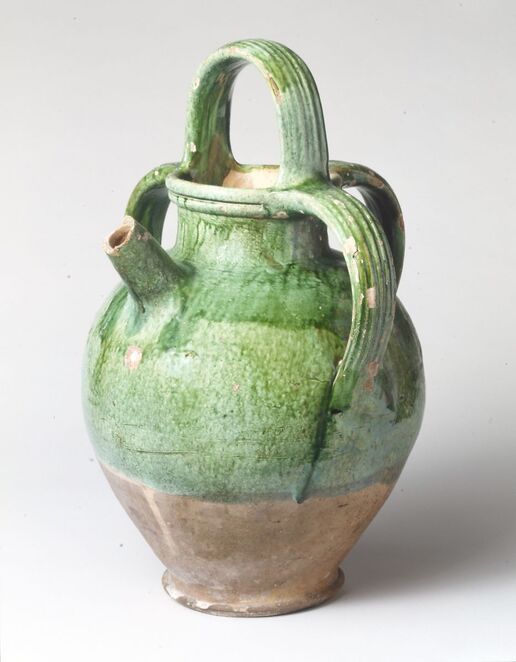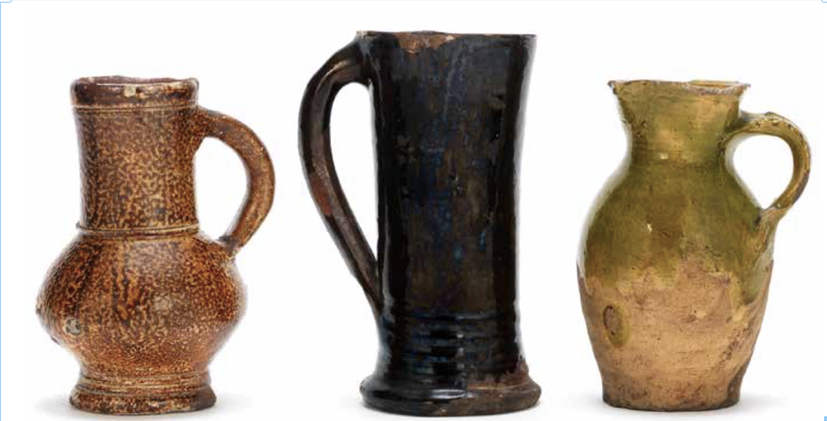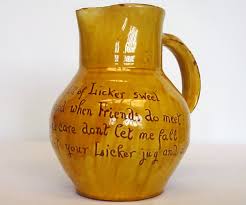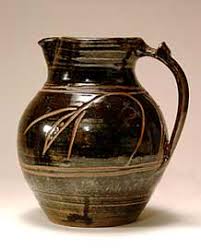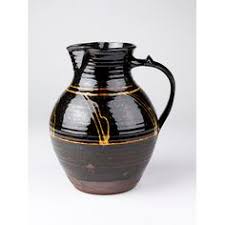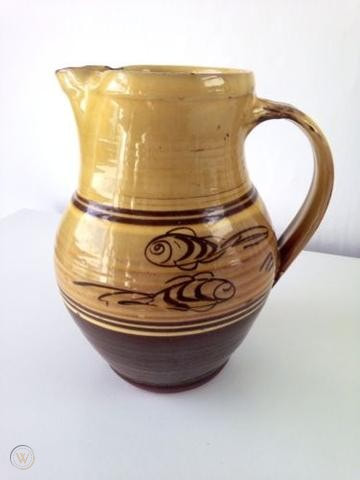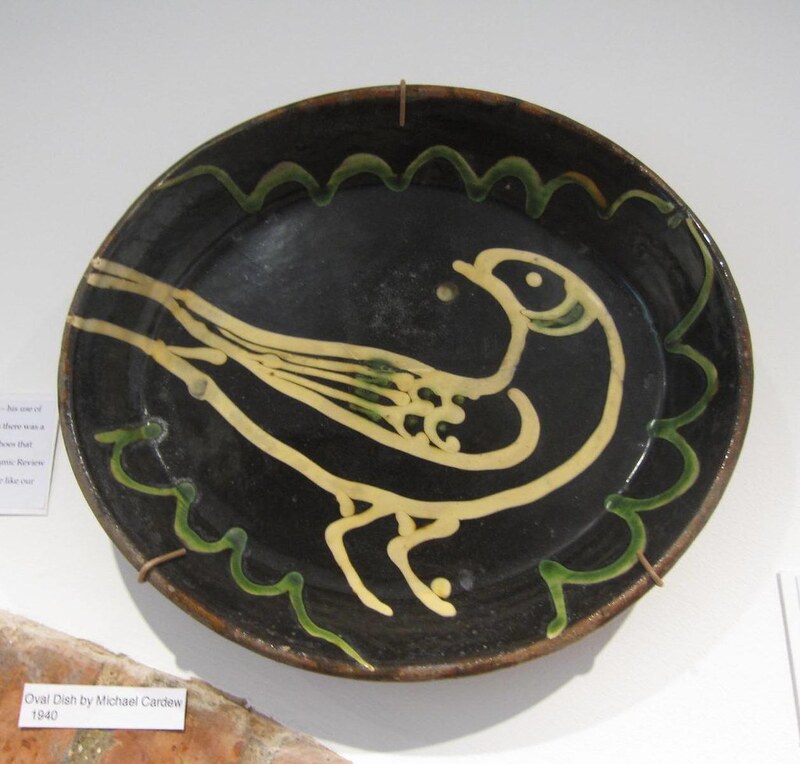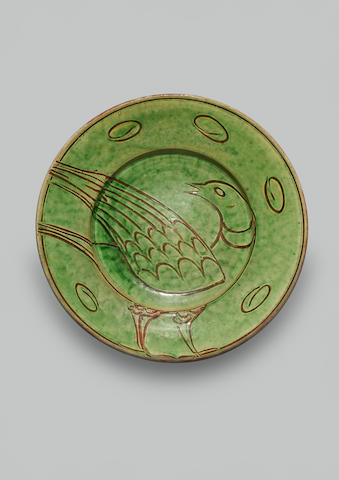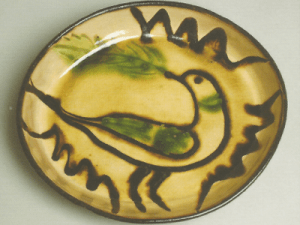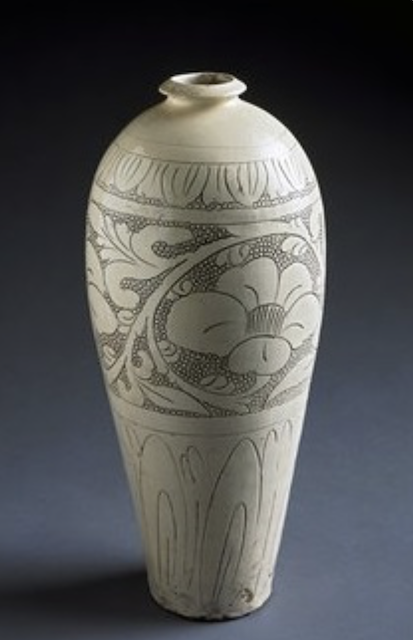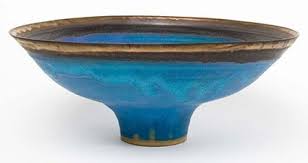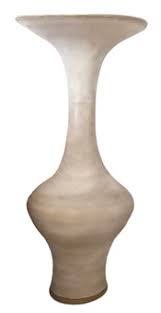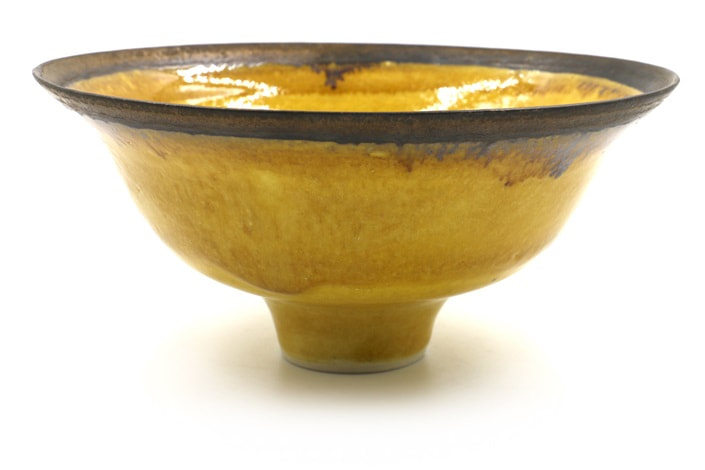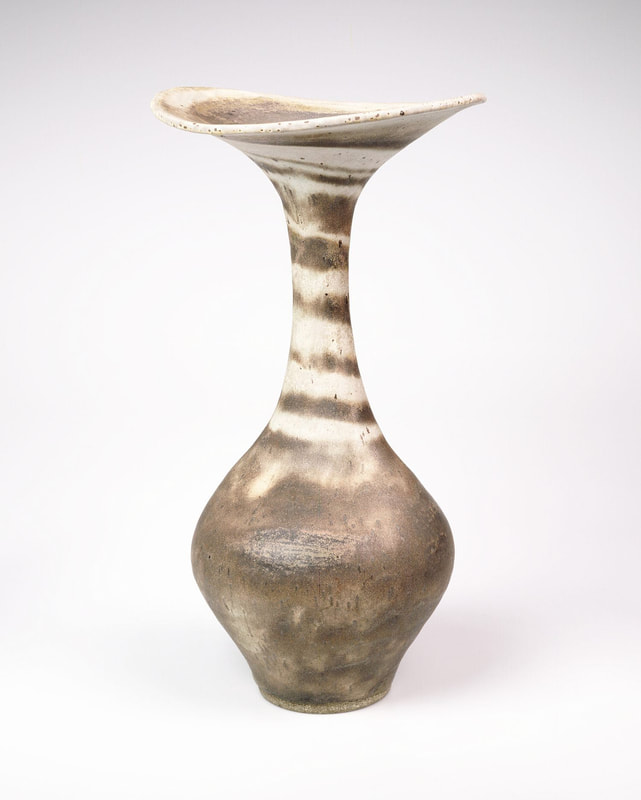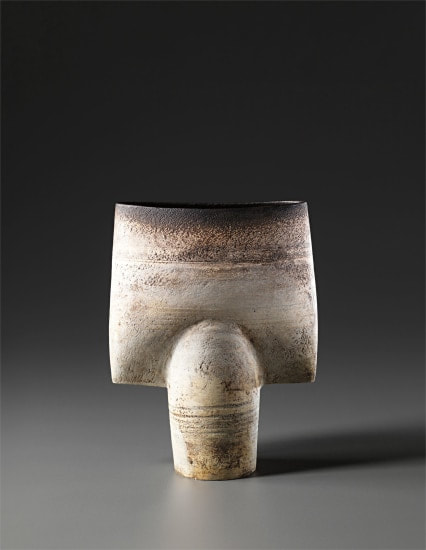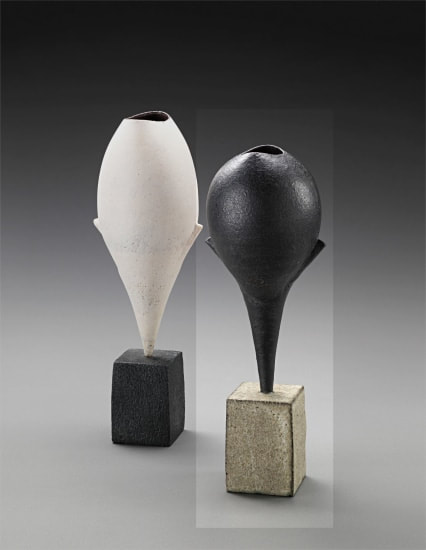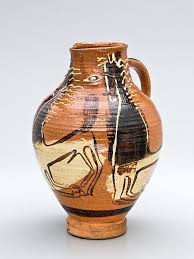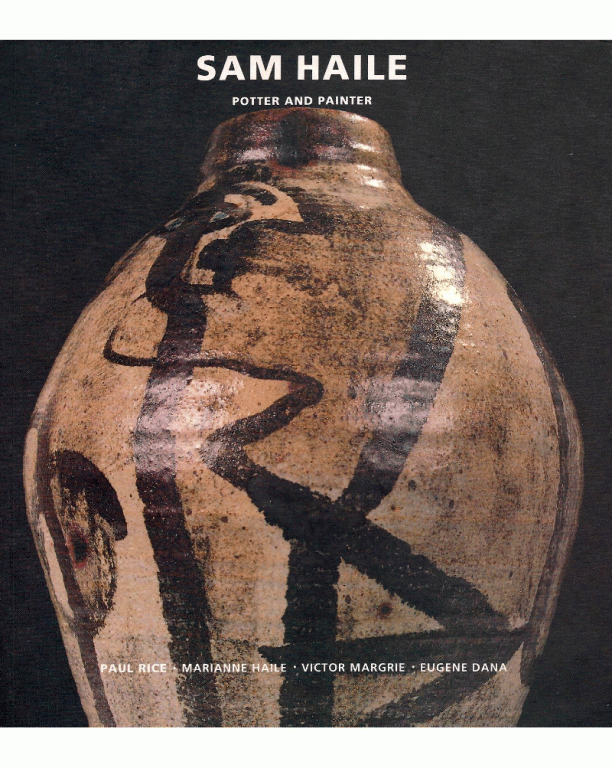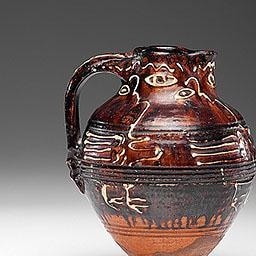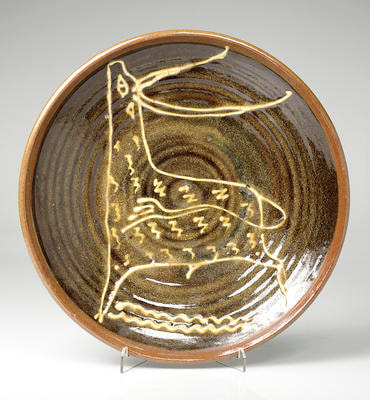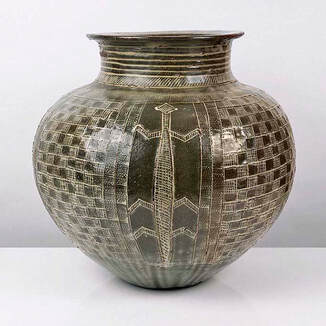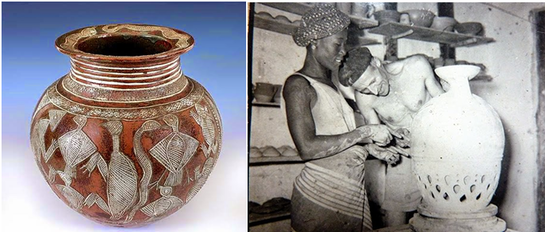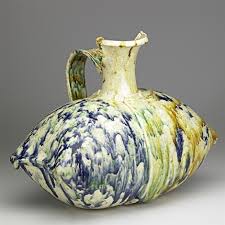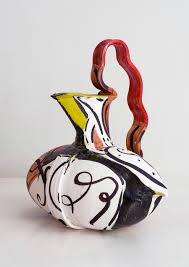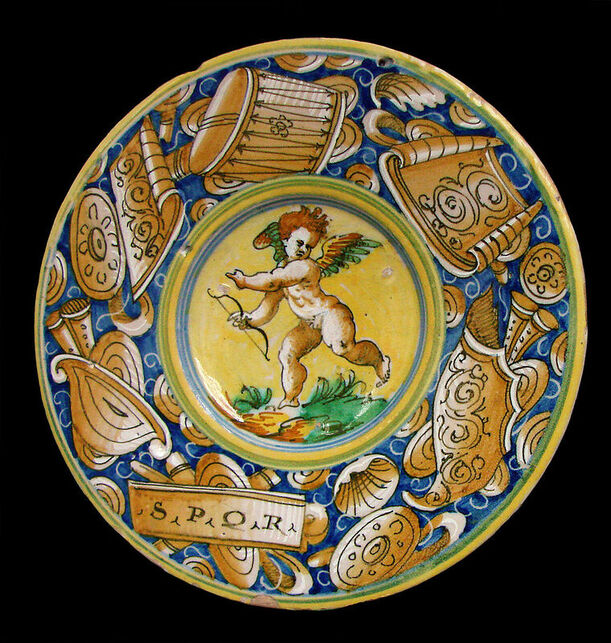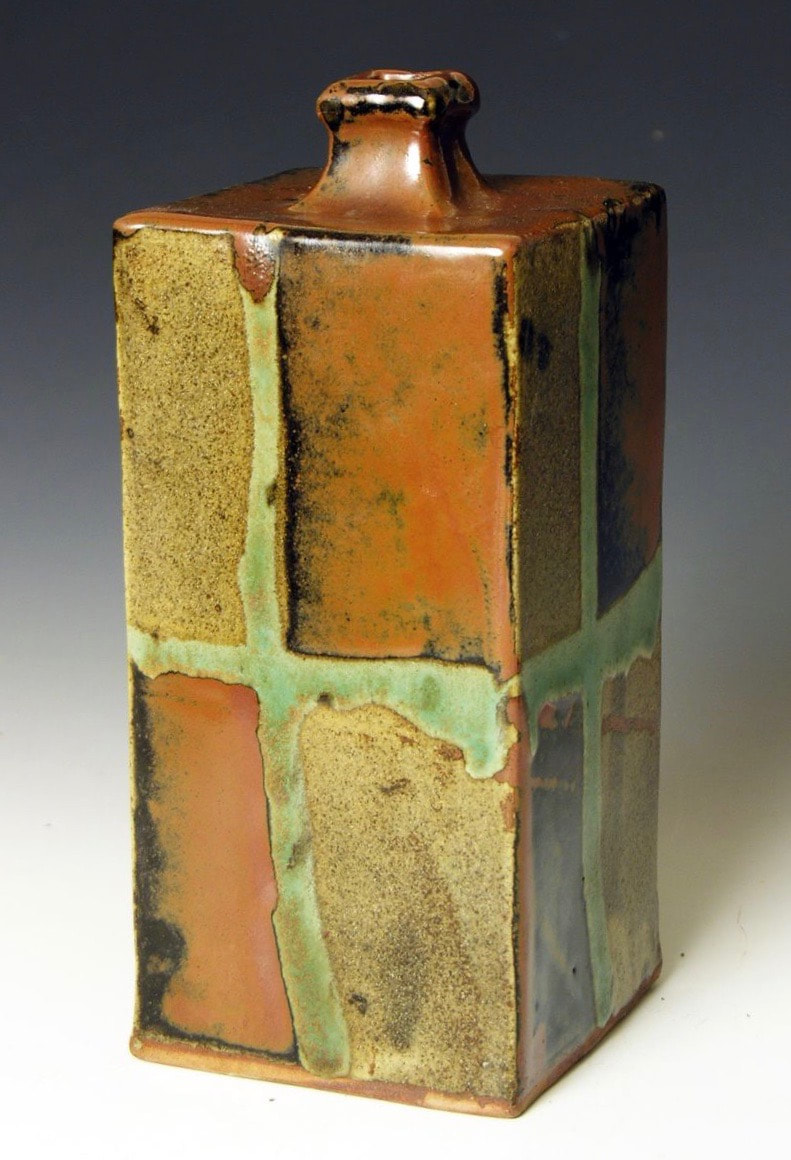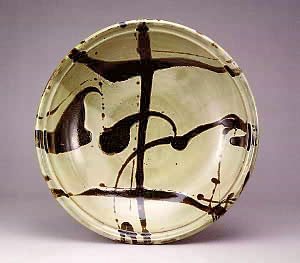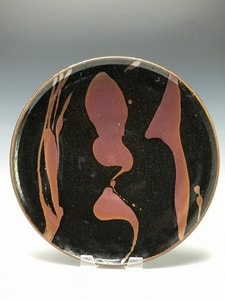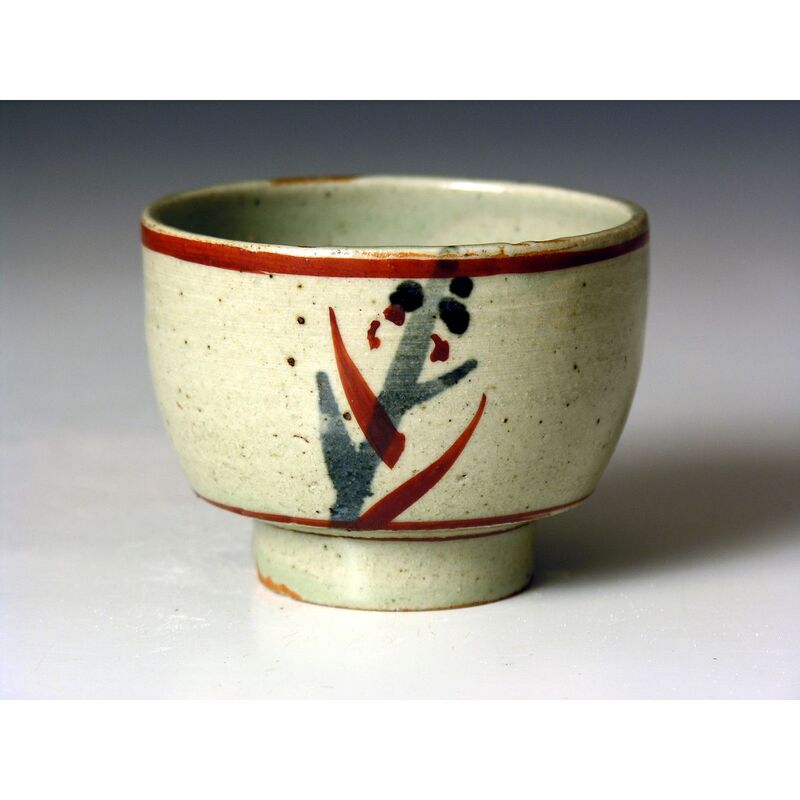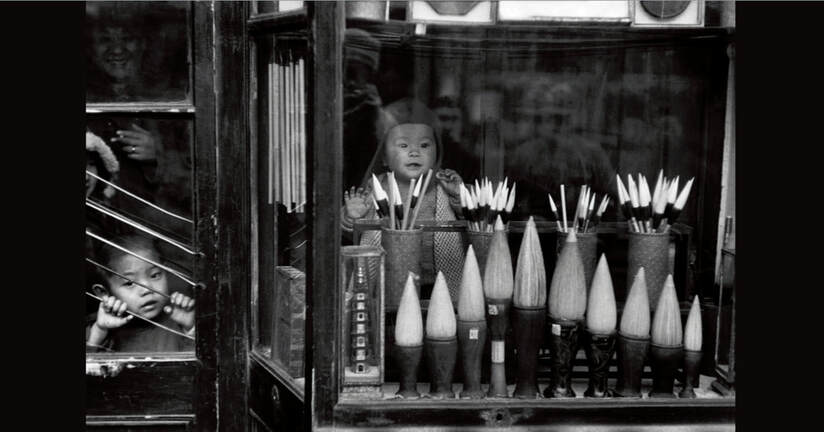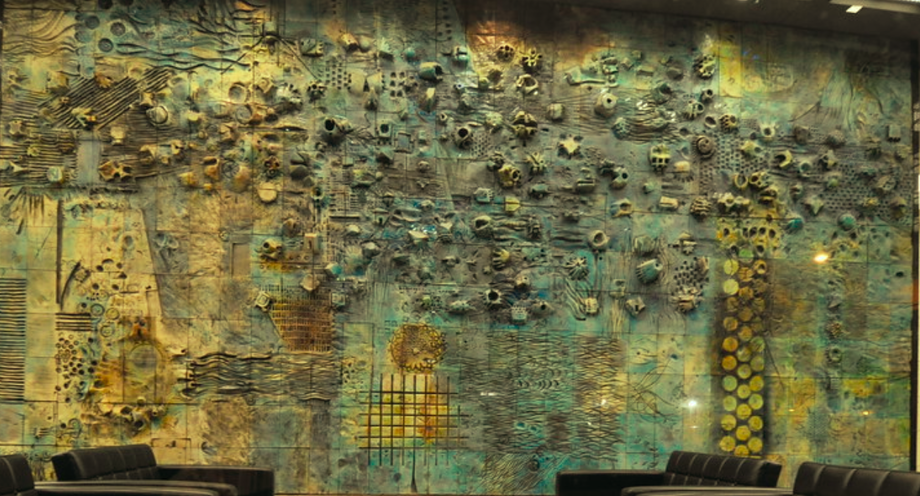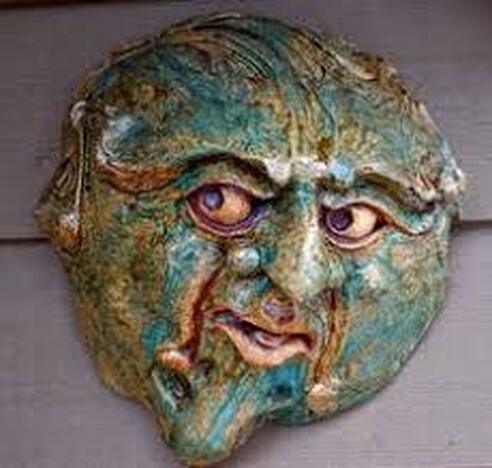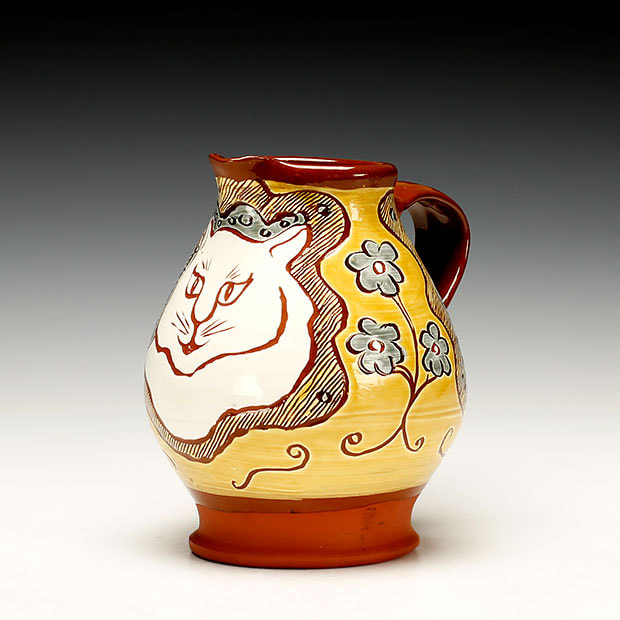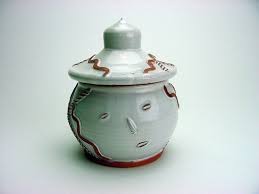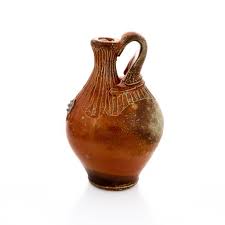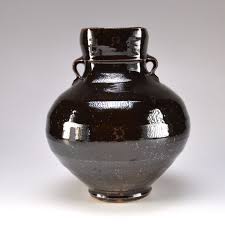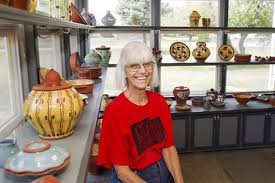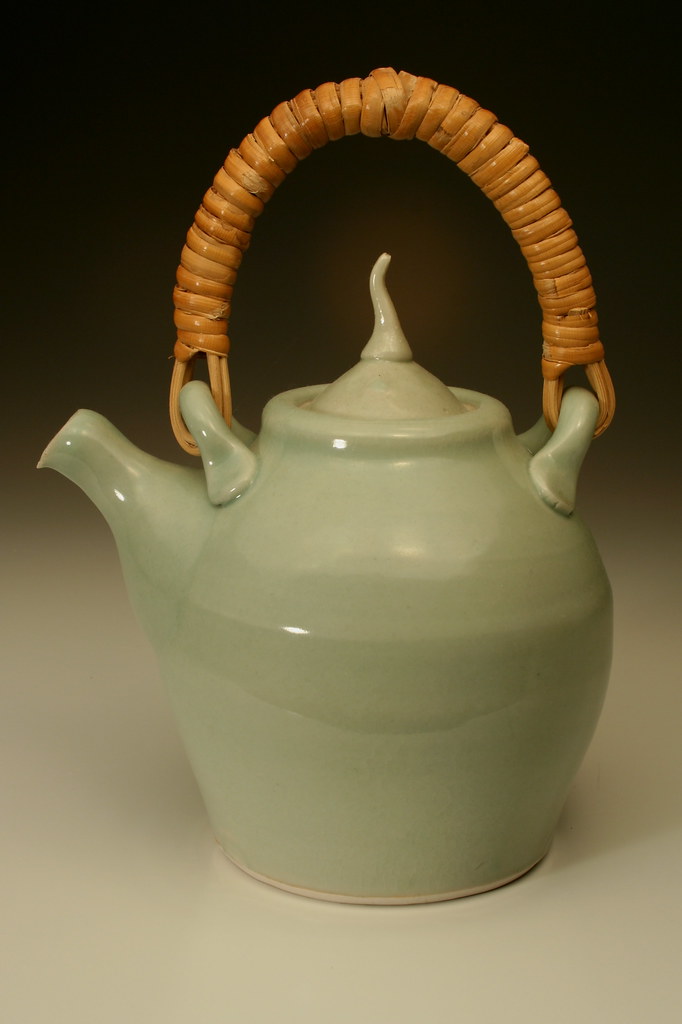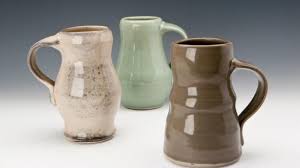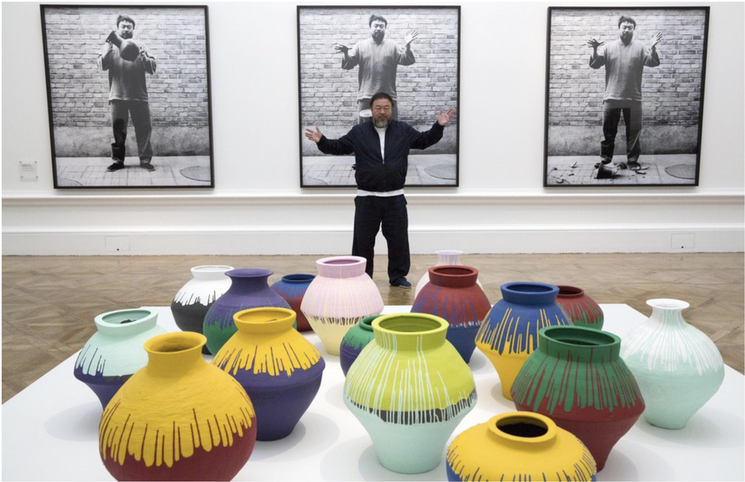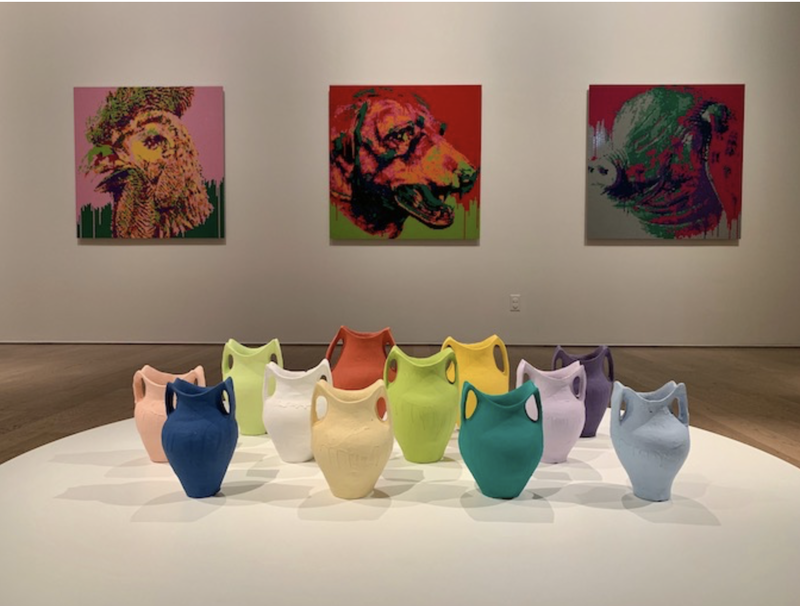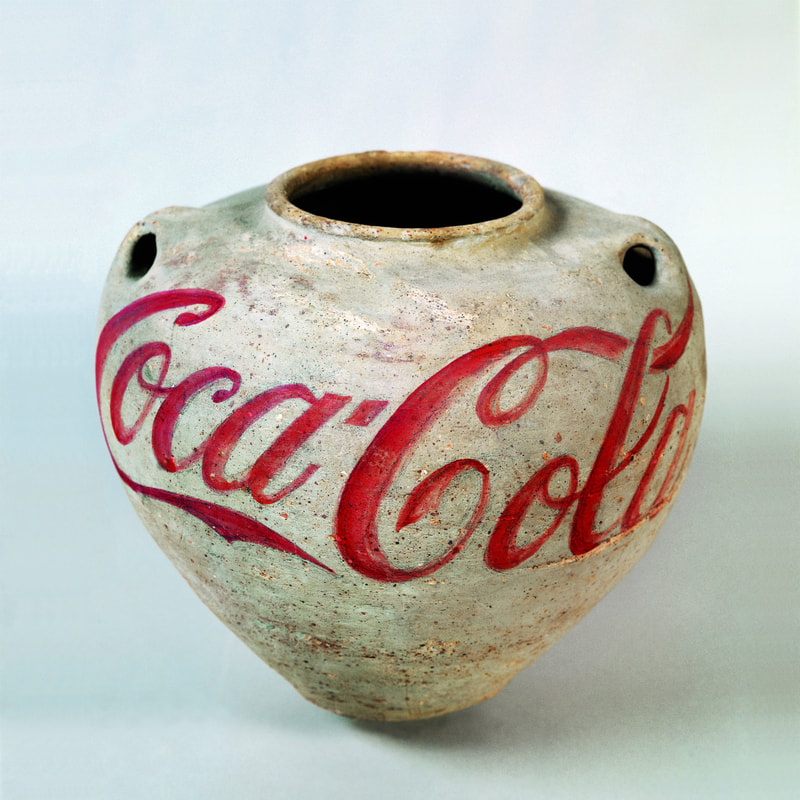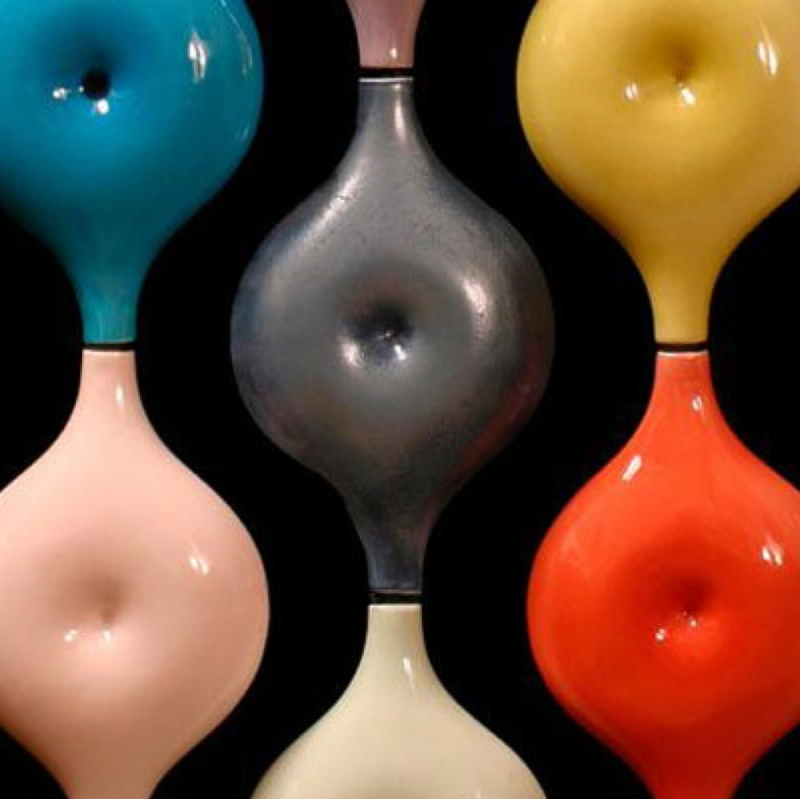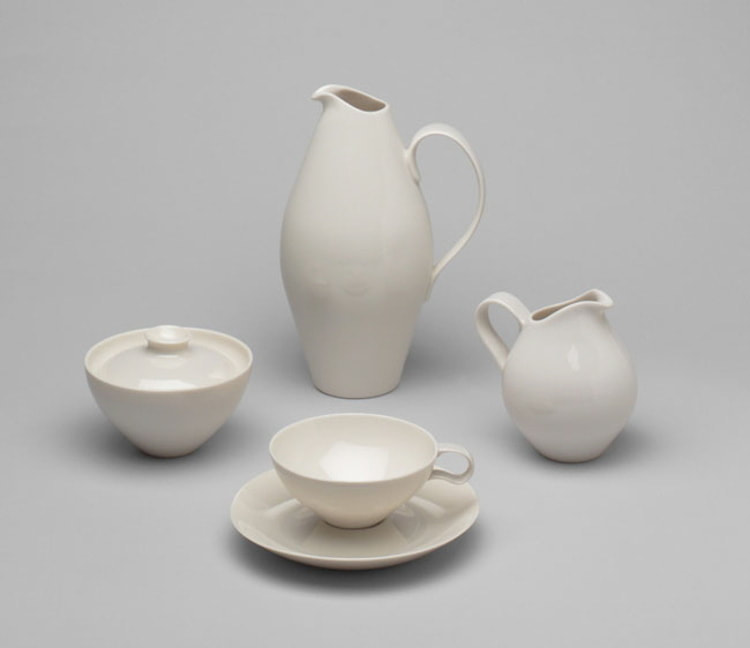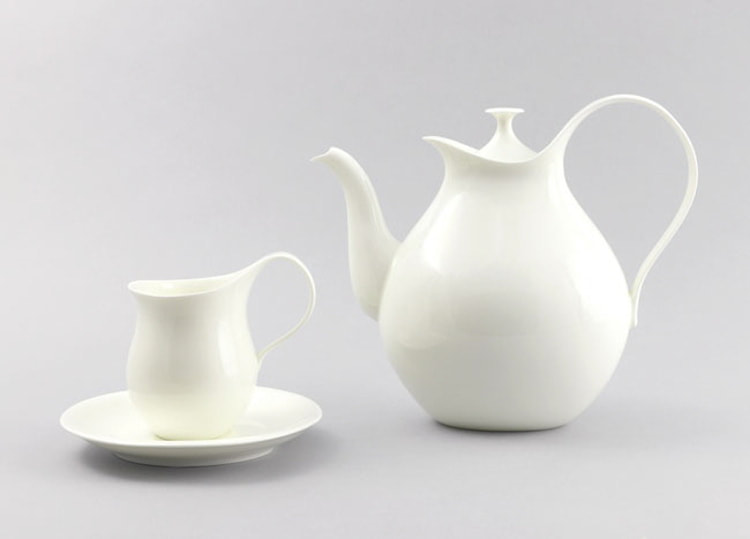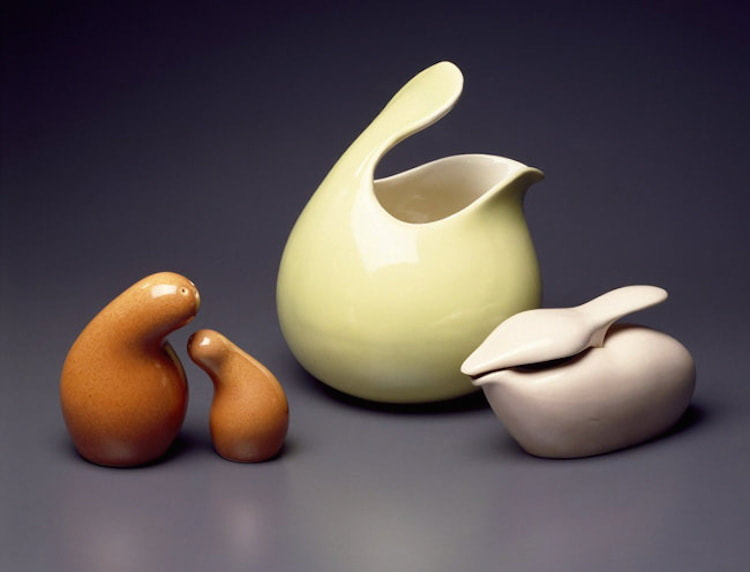The Food of Love
This page documents some of the clay work and artists who have nourished my imagination. The links are gateways to traditions, artists, and their work.
"Vase à bec" in the tradition of the Saintes potteries of southwestern France which date back to the 13th century. Such vigorous form is fit for a banquet table.
Three beauties of the late Middle Ages.
Photo: V&A Museum Photo: Worthpoint
To my delightful surprise, I found an active link to a British slipware pottery of the last century, Winchcombe Pottery. As a young potter I saw Winchcombe as a symbol. It embodied Cardew's passion for clay, and a strong expression of his sense of dignity for work, in which I found sustenance. The mud and water man, Michael Cardew revived Winchcombe by bringing Ray Finch out of retirement to help.
One can see a familial lineage between the three beauties above and these jugs, separated by 400 years or so. Matt Grimmitt, can be seen currently making at Winchcombe.
To my delightful surprise, I found an active link to a British slipware pottery of the last century, Winchcombe Pottery. As a young potter I saw Winchcombe as a symbol. It embodied Cardew's passion for clay, and a strong expression of his sense of dignity for work, in which I found sustenance. The mud and water man, Michael Cardew revived Winchcombe by bringing Ray Finch out of retirement to help.
One can see a familial lineage between the three beauties above and these jugs, separated by 400 years or so. Matt Grimmitt, can be seen currently making at Winchcombe.
Michael Cardew, Pioneer Pottery, lived a life of sowing seeds in the form of creating or reviving pottery production studios in rural England and Nigeria. He made a lot of great pots; one of my favourites is his series of this bird motif.
Photo: UK Pottery Studio Photo: Bonhams Photo: willow Tree Pottery
Peony vase. Song Dynasty, Cizhou, 13th century, cream slip on stoneware. Long have I admired the casual mastery of this pot's demeanor.
Dame Lucy Rie DBE, Austrian-British, (1902–1995) , her forms hang in the balance between delicate and robust.
I don't like pottery, I like some pots - Dame Lucie Rie.
I don't like pottery, I like some pots - Dame Lucie Rie.
Photo: Wazars
Hans Copper (1920-1981), an articulate, precise, poetic grammarian of form.
Photo: artnet
Sam Haile, vigorous form and a painter's sense of composition.
Ladi Kwali (1925-1984), her roots firmly anchored in the tradition of Nigerian women making functional wares, which she learned at her aunt's knee, she then worked with Michael Cardew, and her mastery of form and design melded with western traditions of stoneware and slipware.
Betty Woodman (click on her name and be amazed).
Photo: artnet
Shoji Hamada
Photo: Phil Rogers
Henri Cartier-Bresson
Henri Cartier-Bresson took this photo in 1948 on a trip to China. These luxuriantly thick brushes would be great for slip painting. You can see a faint reflection of Cartier-Bresson, with his camera aimed. The smiling man in the door-way is like a ghost from another era.
Jordi Bonnet
Jordi Bonet (1932-1979), Barcelona-Montréal sculptor, was an international force at the height of his career. Montréal became his home and safe harbor from Franco's fascism. I have studied this clay mural on many a rainy Vancouver day, located in the Guinness Tower, its symbols and complex structure are a vibrant modernist expression. Montréal is home to many of Bonet's intriguing murals.
Bob Kingsmill
For a moment he was a journalist, and always a raconteur of great wit, when he decided to dedicate a lifetime to chronicling the liminal and its spritely creatures in his studio on Granville Island, Vancouver, working in the Celtic traditions of the Green Man. If you collected all the faces he has made over all his years of making, they would fill...a stadium? What a show that would be!
Clary Illian
Clary Illian, continues to produce a wide range of ripe, generous, functional forms, which have taken a decorative and playful turn over the years. Clary speaks of the importance of making her work accessible, a principle she would have encountered during her apprenticeship at the Leach Pottery. Her handles, especially, are fluid, sensual, lyrical, and they work beautifully.
Ai Wei Wei

